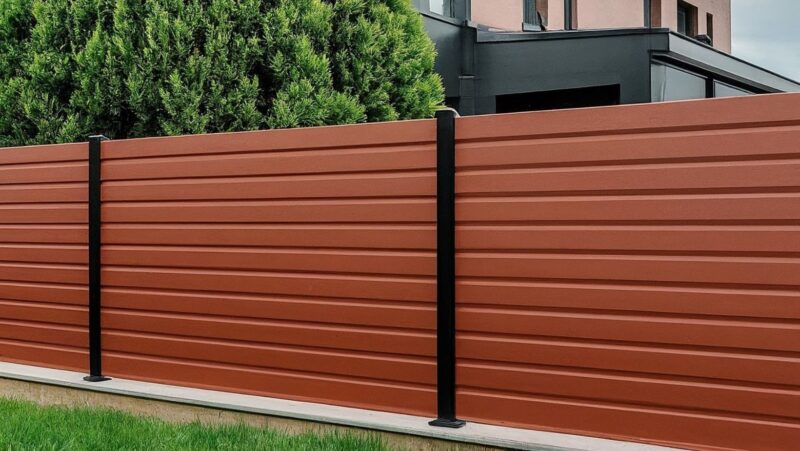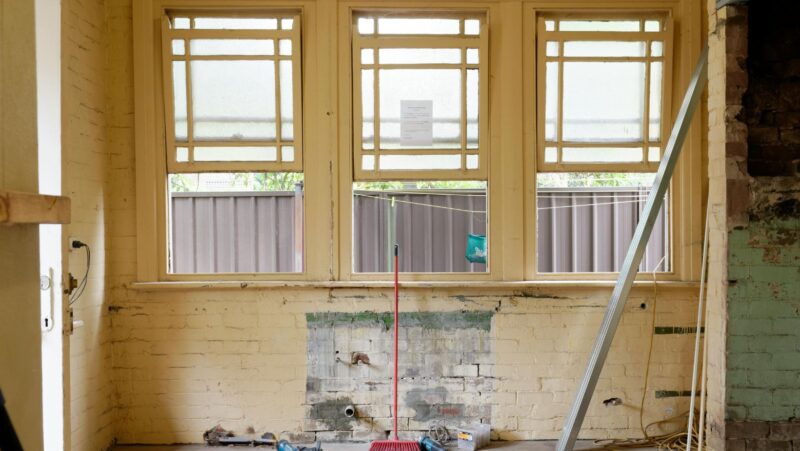You’ve likely heard about sustainability in fashion, but have you considered its impact within the domain of handcrafted fashion? Handcrafted fashion, with its emphasis on ethical practices and eco-friendly materials, embodies a conscious response to the environmental crisis faced by our planet. It’s about valuing the hands that weave the fabric, choosing organic cotton over synthetics, and understanding the lifecycle of the clothes you wear. But, there’s so much more to explore. Are you ready to join this important conversation and discover how your fashion choices can make a difference?
Table of Contents
ToggleUnderstanding Handcrafted Fashion
To truly appreciate the value of handcrafted fashion, you must first understand its unique process, which combines traditional skills, creativity, and dedication to sustainability. It’s more than just stitching materials together; it’s about creating a narrative, a personal touch that mass production can’t replicate. You’re not only buying a piece of clothing but also preserving a craft, supporting a community, and reducing your carbon footprint.
Each piece of handcrafted clothing is a labor of love. Artisans spend countless hours creating intricate designs using centuries-old techniques, blending tradition with innovation. You can see and feel the difference in every stitch, every detail. The textiles are often sourced responsibly, more often than not, from sustainable organic materials, reducing the environmental impact.
But it’s not just about the end product. Handcrafted fashion fosters a sense of connection between you and the artisan. You’re not just a customer; you’re a patron, a supporter of their craft. This connection is real, tangible, and meaningful.
The Ethics of Handmade Clothing
Beyond appreciating the craftsmanship and sustainability of handcrafted fashion, it’s equally important to ponder the ethical aspects of this artisanal industry. You see, the ethics of handmade clothing aren’t just about fair treatment of workers, but it’s also about the mindful use of resources, transparency in business practices, and respect for cultural heritage.
Consider these four ethical aspects:
- Mindful Resource Use: Handmade clothing often uses locally sourced, sustainable materials. It’s about respecting the planet and reducing waste, which is a fundamental ethical principle.
- Transparency: Ethical handmade fashion means transparent business practices. You should know where your clothing comes from, who made it, and under what conditions.
- Cultural Respect: Handmade clothing often draws from traditional techniques and styles. It’s essential to make sure cultural appropriation doesn’t occur, and artisans are credited for their craft.
- Quality Over Quantity: Ethical handmade fashion prioritizes quality over fast fashion’s quantity. This means less waste and a higher value placed on each garment.
Understanding these points can help you make more ethical choices when investing in handcrafted fashion. It’s not just about buying clothes; it’s about supporting a system that values people, the planet, and culture.
Labor Rights in Handcrafting
When delving into the world of handcrafting, it’s important to contemplate the labor rights of artisans, as these individuals often work in conditions that can be enhanced greatly. You must understand that these craftsmen and craftswomen aren’t just producing clothing; they’re preserving traditional skills and cultural heritage. However, they often operate in environments lacking basic labor protections.
The world’s handicraft sector is enormous, but it’s also disjointed and lacks universal standards. This disarray can lead to exploitation, with many artisans living in poverty despite their invaluable skills. It’s essential to promote the rights of these workers, ensuring they receive fair wages, safe working conditions, and the respect they deserve.
Labor rights aren’t just about the individual; they’re also about building sustainable communities. When artisans are paid fairly and work in healthy environments, they’re more likely to continue their craft, passing down skills and contributing to their local economies. The sustainability of handcrafted fashion, then, depends not only on the materials used but also on the treatment of the artisans themselves. You’re not just buying a piece of clothing; you’re supporting a chain of ethical labor practices.
Fair Trade and Handcrafted Fashion
Exploring the intersection of fair trade and handcrafted fashion, you’ll find it’s more than just a buzzword; it’s an essential strategy for guaranteeing artisans receive equitable compensation and recognition for their skills. Fair trade isn’t merely about fair pricing, but about establishing a more sustainable, ethical fashion industry.
To better understand, let’s break down the four key aspects of fair trade in handcrafted fashion:
- Equitable Compensation: Fair trade guarantees artisans are paid a living wage, promoting economic stability and reducing poverty.
- Safe Working Conditions: Fair trade verifies safe, healthy environments for artisans, reducing exploitation and promoting human rights.
- Community Development: Fair trade practices often include reinvestment into artisan communities, fostering growth and sustainability.
- Environmental Stewardship: While not the main focus of fair trade, many organizations also emphasize sustainable practices, like reducing waste and using renewable resources.
Eco-Friendly Materials in Fashion
While fair trade practices establish a more ethical fashion industry, it’s also important to contemplate the materials we’re using, as eco-friendly options can greatly reduce fashion’s environmental footprint. You might wonder, what exactly are these materials?
They’re sourced from nature, often renewable, and biodegradable. Examples include organic cotton, hemp, and bamboo. These materials require less water and fewer pesticides during growth compared to traditional textiles, thereby reducing environmental harm. It’s not just about the raw materials either; dyeing and finishing processes also matter. Natural dyes and minimal chemical usage help preserve ecosystems and protect workers’ health.
However, it’s essential not to overlook the challenges. Sourcing and producing these materials can be more expensive and labor-intensive, which could lead to higher retail prices. These hurdles shouldn’t deter us, though. They should motivate us to innovate and find solutions.
You can play a part, too. By choosing eco-conscious brands, you’re voting with your wallet and encouraging an industry-wide shift towards sustainability. Remember, each small decision can have a big impact. Let’s make fashion kinder to our planet, shall we?
Handcrafting With Sustainable Fabrics
Exploring the world of handcrafting, you’ll find that sustainable fabrics not only minimize environmental impact but also breathe new life into traditional artisan techniques. These materials aren’t just eco-friendly; they also preserve ancient crafts, providing a unique blend of fashion and sustainability.
- Organic Cotton: Unlike conventional cotton, organic cotton uses less water and doesn’t rely on synthetic pesticides. It’s a fantastic choice for handcrafting garments, keeping both you and the environment healthy.
- Hemp: This robust fabric is easy to grow, requiring little water and no pesticides. It’s a powerhouse in durability and breathability, perfect for handcrafted clothing.
- Linen: Made from flax plant fibers, linen is biodegradable and recyclable. It’s cool, comfortable, and perfect for crafting summer wear.
- Bamboo: This fast-growing plant produces a soft, breathable material that’s ideal for handcrafted fashion items.

Choosing sustainable fabrics isn’t just about being environmentally responsible. It’s about supporting the longevity of artisan techniques and fostering a more ethical fashion industry. When you pick up that needle and thread, remember that each stitch you make with sustainable materials contributes to a greener, more ethical world.
The Role of Recycled Materials
Beyond the domain of sustainable fabrics, there’s another powerful player in the sustainable fashion world: recycled materials. You might be surprised at how much potential waste can be transformed into fashionable pieces.
Recycled materials play an important role in reducing the fashion industry’s carbon footprint. By repurposing items that would otherwise end up in a landfill, you’re not just conserving natural resources but also limiting the energy consumption and pollution associated with producing new materials.
Consider, for example, the potential of recycled plastic. It’s increasingly being transformed into chic, wearable textiles. Brands are now creating everything from shoes to luxurious dresses out of repurposed plastic bottles, proving that style doesn’t have to come at the cost of the environment.
Recycling, however, isn’t a quick-fix solution. It’s a significant step, but it’s essential to remember that not all materials can be recycled indefinitely. Over time, quality can deteriorate, and some processes can still release harmful substances. Therefore, while embracing recycled materials, it’s important to balance this with other sustainable practices.
In the end, the goal isn’t just to ‘recycle more’, but to rethink our approach to fashion fundamentally.
Slow Fashion Vs. Fast Fashion
In the domain of sustainability, it’s important to comprehend the sharp contrast between slow fashion and fast fashion, as your choices can greatly impact the environment and society. Slow fashion is about quality over quantity, focusing on timeless pieces that are made to last. Fast fashion, on the other hand, prioritizes trendy, disposable items produced at a breakneck pace.
- Production Speed: Fast fashion brands churn out new collections at a frantic pace, often weekly. Slow fashion takes its time, producing fewer collections annually, ensuring quality and ethical manufacturing.
- Quality and Longevity: Slow fashion treasures the art of crafting durable items that can be worn season after season, while fast fashion items may not survive beyond a few wears.
- Environmental Impact: Fast fashion contributes significantly to pollution and waste due to its rapid production and disposal cycle. Slow fashion aims to minimize its environmental footprint through mindful manufacturing processes and materials.
- Ethics: Slow fashion brands prioritize fair wages and safe working conditions. Fast fashion often overlooks these ethical considerations in favor of cutting costs.
Case Studies: Sustainable Handcrafted Brands
Let’s explore some intriguing examples of sustainable, handcrafted brands that are championing the slow fashion movement. These forerunners are making waves in the fashion industry, demonstrating that style and sustainability can go hand in hand.
First up is Eileen Fisher, a brand that has made a commitment to sustainability as part of their mission. They use organic cotton, recycled wool, and natural dyes, reducing the environmental footprint of their production process. Their timeless, versatile designs also encourage consumers to buy less and wear more.
Then there’s Patagonia, a brand that’s been eco-friendly since its inception. They’ve implemented a ‘Worn Wear’ program that encourages customers to repair, reuse, and recycle their garments. It’s not only about reducing waste but also about fostering a culture of conscious consumption.
Lastly, consider the example of Soko, a jewelry brand that empowers Kenyan artisans by providing them with the tools and training necessary to create beautiful pieces from locally-sourced, eco-friendly materials. They’re not just crafting jewelry, they’re creating sustainable livelihoods.
These brands are proving that handcrafted fashion doesn’t have to compromise on sustainability. They’re setting a precedent for the industry to follow, showing that it’s possible to be fashionable and eco-friendly.
The Environmental Impact of Handcrafted Fashion
While appreciating these pioneering brands, it’s worth examining how handcrafted fashion can greatly reduce the environmental toll of the fashion industry. You might be surprised by the significant role it plays.
- Reduced Waste: Handcrafted fashion practices often utilize every piece of material, leaving virtually no waste. This contrasts starkly with mass production, which can generate excessive waste.
- Lower Energy Consumption: Handmade creations require less energy than mass-produced items, as they don’t rely on large-scale machinery. This contributes to a smaller carbon footprint.
- Sustainable Materials: Many artisan designers opt for eco-friendly materials, like organic cotton or reclaimed textiles, which have a lesser impact on our planet.
- Longevity: Handcrafted items are typically made to last, reducing the fast fashion cycle of constant buying and discarding.
Understanding the environmental benefits of handcrafted fashion doesn’t just make you an informed consumer; it can change the way you perceive your wardrobe. It’s a powerful reminder that every purchase you make has an impact – positive or negative – on our world. So, next time you’re shopping, remember that opting for handcrafted fashion is a step towards a more sustainable lifestyle.
Future Trends in Sustainable Fashion
As we look towards the future, you’ll notice an exciting shift in the world of fashion as it embraces more sustainable practices and innovative materials. It’s not just about trends—it’s about the survival of our planet. You’ll see designers and manufacturers alike leaning into practices that are far less harmful to the environment.
One of the most significant trends you’ll see is the use of recycled and upcycled materials. Think less waste and more creativity. Isn’t it fascinating how yesterday’s waste can become tomorrow’s haute couture? You’ll also see a rise in the use of biodegradable materials – fabrics that will return to the earth, not sit in a landfill for centuries.
Another exciting trend is the increased use of organic, non-toxic dyes. You’ll no longer have to worry about the harmful effects of synthetic chemicals on your skin or the environment. Plus, these dyes often have a more vibrant, natural look.
Making the Switch to Handcrafted Clothes
In your journey towards sustainable fashion, embracing handcrafted clothes can be your game-changer, offering not only a unique aesthetic but also a significantly lower environmental impact. By choosing to buy handcrafted, you’re supporting ethical labor practices and contributing to a more sustainable future, all while enjoying an unparalleled level of craftsmanship.

To help you make the switch, consider these four key steps:
- Research Brands: Look for brands that prioritize ethical manufacturing and sustainable materials. They’re out there, and they’re making a difference.
- Invest Wisely: Handcrafted clothes may cost more upfront, but their longevity and timeless design can save you money in the long run.
- Care for Your Clothes: Proper care extends the life of your clothes. Learn how to maintain your handcrafted pieces to maximize their lifespan.
- Recycle and Upcycle: When your clothes reach the end of their life, consider recycling or upcycling them. Many brands offer take-back programs or suggestions on how to repurpose old items. Visit https://rcreations.design/ for more ideas on upcycling and sustainable fashion practices.
Conclusion
By choosing to wear handcrafted fashion, you’re not just making a stylish statement, but you’re also casting a vote for sustainability. Picture a world where artisans are respected, resources are cherished, and the environment isn’t sacrificed for fast fashion.
This isn’t a lofty dream. It’s a reality we can weave together, stitch by stitch when we opt for sustainable, handcrafted fashion.
So, let’s don our eco-friendly hats and stride towards a greener, fairer fashion future.





